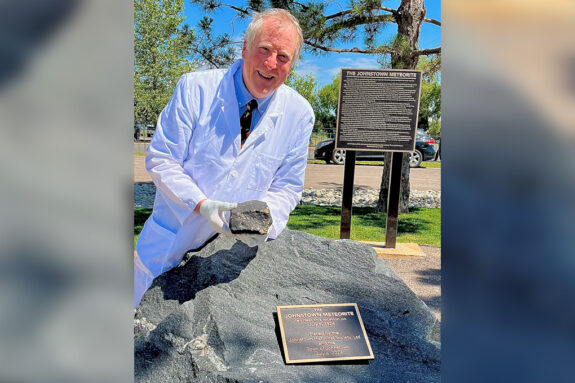E. A. Griswold Professor of Geophysics and MIT Vice President for Research Maria Zuber to deliver the William Bowie Lecture at AGU’s 2020 Fall Meeting.
The annual AGU Fall Meeting “features 28 awards given by AGU sections to recognize distinguished scientists with proven leadership in their fields of science,” and named lectures to honor them. This year’s Geodesy section’s William Bowie Lecture, which honors the life and work of AGU’s first president and geodetic engineer, will be presented by Maria Zuber, E. A. Griswold Professor of Geophysics and MIT Vice President for Research. The lecture is presented annually and “recognizes significant contributions to the fundamentals of geophysics, as well as unselfish cooperation in research.” The invited talk is part of the Bowie Lecture series, which was established to commemorate the 50th presentation of AGU’s highest honor, the William Bowie Medal.
“I’m thrilled for the opportunity to give the lecture honoring William Bowie, an extraordinary figure in the field of geodesy and in AGU’s leadership history,” says Zuber. “The lecture affords me the opportunity to step back and think about my research in the context of space geodesy, specifically how precise measurements have unlocked a treasure trove of understanding about the structure and evolution of terrestrial planets.”
Former MIT recipients of the William Bowie Medal include former and current MIT Professors Susan Solomon, Carl Wunsch, Henry M. Stommel, Frank Press, and Jule G. Charney; Tom Herring delivered the Lecture in 1988.
Zuber’s talk “Geodetic Clues in Planetary Treasure Hunts” will take place on December 9th at 7am PT, discussing the importance of obtaining high-quality gravity and topography measurements and data, and how, over time, improved instrumentation and techniques have allowed us unparalleled insights to understand the dynamics and evolution of terrestrial planetary bodies like Mars, Mercury and the Moon. This process has and continues to open the doors to new discoveries in the inner and outer solar system.
Understanding the dynamics and evolution of terrestrial planetary bodies requires the synthesis of many observables of varying quality and spatial and temporal sampling. Geodetic-quality gravity and topography acquired by orbiting spacecraft provide essential clues in solving planetary puzzles. Collectively these data sets provide a precise reference frame, increasing the value of all other datasets, both remote and in situ. Gravity and topography are fundamental measurements that also provide critical insights in their own right; the advent of highly precise, geodetically-referenced datasets resulted in an extraordinary advance in understanding the constitution and evolution of planets. On Mars, the change in data quality from Viking to Mars Global Surveyor represented a transition from low-resolution topographic models with the wrong pole high to the ability to measure both the height and mass of seasonal (CO2) snowfall, before such measurements were made by terrestrial satellites of Earth. The ultra-challenging thermal environment at Mercury precluded uniformly-sampled, global high-resolution datasets in the MESSENGER mission due to the spacecraft’s elliptical orbit, but the combination of orbital geodetic and Earth-based radar data supplemented by remote sensing observations of surface composition led to novel models for the nature of the planet’s core. At the Moon the combination of high-resolution topographic data from the Lunar Orbiter Laser Altimeter (LOLA) on the Lunar Reconnaissance Orbiter spacecraft with gravity from the dual-spacecraft Gravity Recovery and Interior Laboratory spacecraft enabled, for the first time on a planetary body beyond Earth, geophysics at the spatial scale of geology, and provided observations of pervasive impact-induced fracturing of the lunar crust, and the presence of massive subsurface dikes that pointed to a hypothesized but previously undetected thermal expansion of the Moon. Demonstration of critical technologies for precise measurement of gravity and topography open the possibility of future extraordinary discoveries in the inner and outer solar system.



